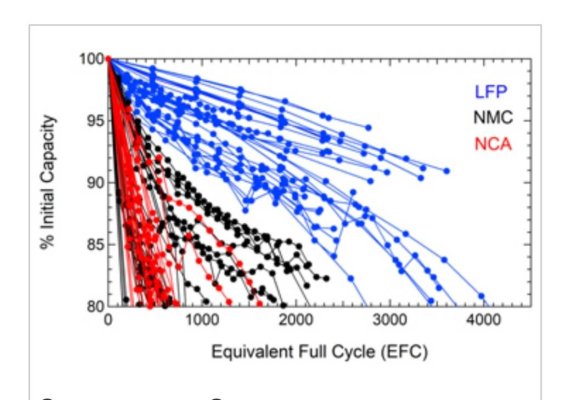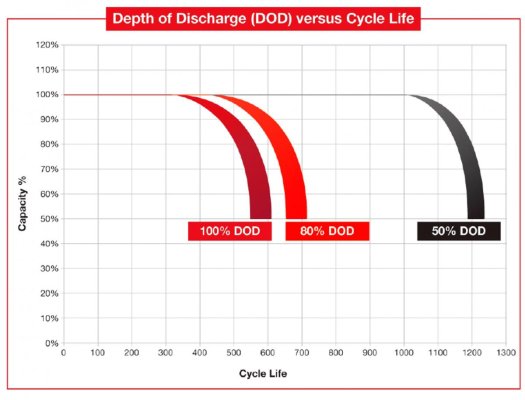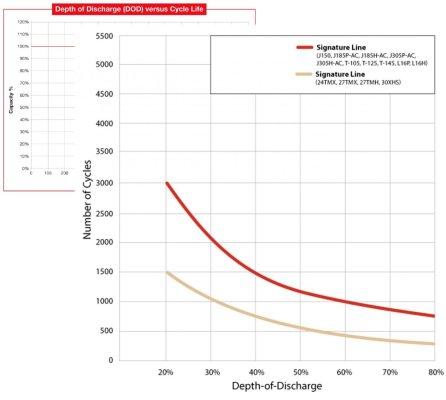danderer
Guru
The recent LiFePO4 poll got me thinking: If I went this route and relocated my battery bank outside of the hot ER, how could I connect the alternator to the new bank location?
We're talking 300A max @12V, a 50' round-trip, and cabling within the ER. That means multiple 4/0 cables each way. I don't like using multiple cables because if every connection isn't perfect and identical.. Can't move the alternator from the engine, can't move the batteries to a closer, cool space..
Go to 24v battery bank. Replace the alternator. Replace the inverter. Get a big 24-12 converter for the 12v loads (or better, keep one large 12v AGM for those loads, charged with a 24v-12v charger). I guess that'd work but additional complexity and $.
..or 24v with a 12v AGM might not work. Could be the case that I'd run out of 12v well before the 24v bank (powering just the inverter) is run down. So put 2 AGMs in rather than 1. So now rather than my current 4 AGMs I have 2 AGMs and LiFePO4 . Getting silly-complex here.
Other ideas?
We're talking 300A max @12V, a 50' round-trip, and cabling within the ER. That means multiple 4/0 cables each way. I don't like using multiple cables because if every connection isn't perfect and identical.. Can't move the alternator from the engine, can't move the batteries to a closer, cool space..
Go to 24v battery bank. Replace the alternator. Replace the inverter. Get a big 24-12 converter for the 12v loads (or better, keep one large 12v AGM for those loads, charged with a 24v-12v charger). I guess that'd work but additional complexity and $.
..or 24v with a 12v AGM might not work. Could be the case that I'd run out of 12v well before the 24v bank (powering just the inverter) is run down. So put 2 AGMs in rather than 1. So now rather than my current 4 AGMs I have 2 AGMs and LiFePO4 . Getting silly-complex here.
Other ideas?





